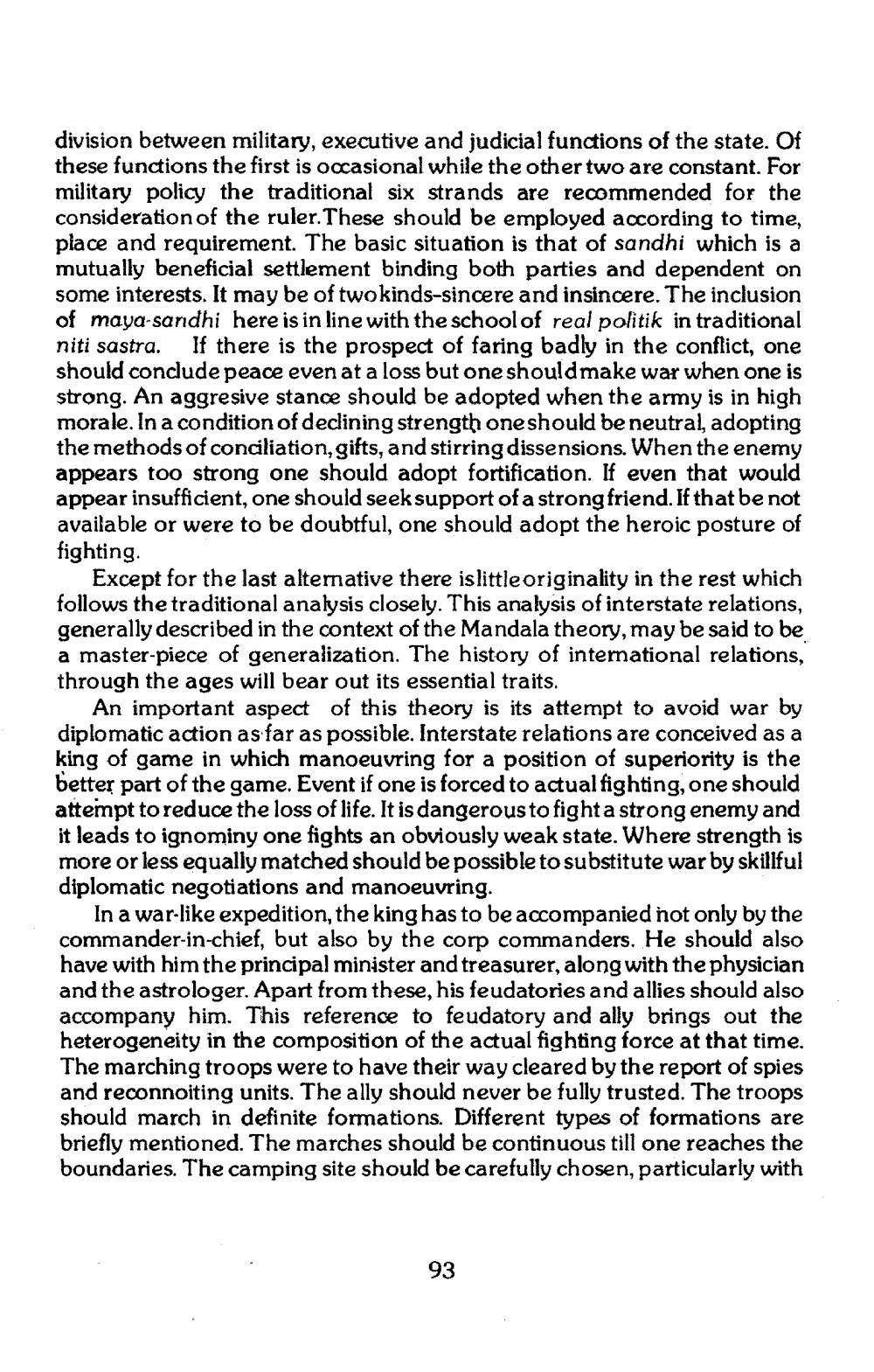________________
division between military, executive and judicial functions of the state. Of these functions the first is occasional while the other two are constant. For military policy the traditional six strands are recommended for the consideration of the ruler. These should be employed according to time, place and requirement. The basic situation is that of sandhi which is a mutually beneficial settlement binding both parties and dependent on some interests. It may be of twokinds-sincere and insincere. The inclusion of maya-sandhi here is in line with the school of real politik in traditional niti sastra. If there is the prospect of faring badly in the conflict, one should conclude peace even at a loss but one shouldmake war when one is strong. An aggresive stance should be adopted when the army is in high morale. In a condition of declining strength one should be neutral, adopting the methods of conciliation, gifts, and stirring dissensions. When the enemy appears too strong one should adopt fortification. If even that would appear insufficient, one should seek support of a strong friend. If that be not available or were to be doubtful, one should adopt the heroic posture of fighting
Except for the last alternative there is littleoriginality in the rest which follows the traditional analysis closely. This analysis of interstate relations, generally described in the context of the Mandala theory, may be said to be a master-piece of generalization. The history of international relations, through the ages will bear out its essential traits.
An important aspect of this theory is its attempt to avoid war by diplomatic action as far as possible. Interstate relations are conceived as a king of game in which manoeuvring for a position of superiority is the better part of the game. Event if one is forced to actual fighting, one should attempt to reduce the loss of life. It is dangerous to fight a strong enemy and it leads to ignominy one fights an obviously weak state. Where strength is more or less equally matched should be possible to substitute war by skillful diplomatic negotiations and manoeuvring.
In a war-like expedition, the king has to be accompanied not only by the commander-in-chief, but also by the corp commanders. He should also have with him the principal minister and treasurer, along with the physician and the astrologer. Apart from these, his feudatories and allies should also accompany him. This reference to feudatory and ally brings out the heterogeneity in the composition of the actual fighting force at that time. The marching troops were to have their way cleared by the report of spies and reconnoiting units. The ally should never be fully trusted. The troops should march in definite formations. Different types of formations are briefly mentioned. The marches should be continuous till one reaches the boundaries. The camping site should be carefully chosen, particularly with
93




